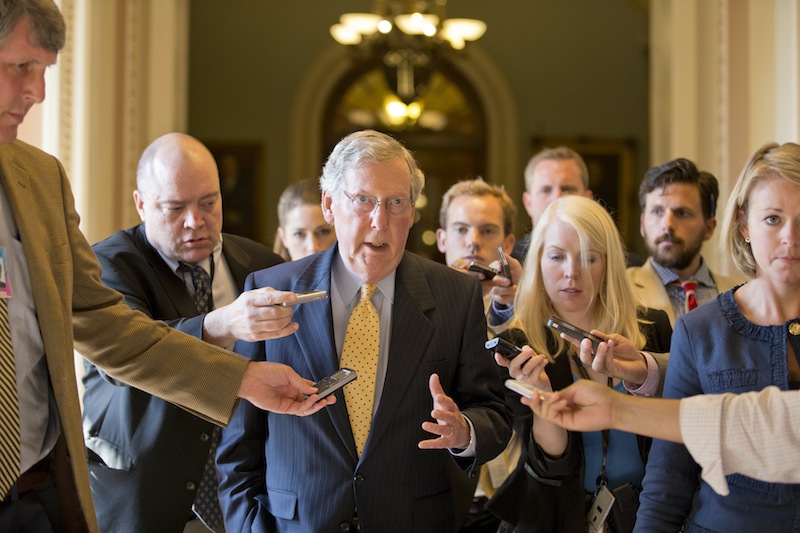WASHINGTON (AP) — Borrowing for tuition, housing and books would be less expensive for college students and their parents this fall but the costs could soon start climbing under a bill the Senate passed overwhelmingly Wednesday.
The bipartisan proposal would link interest rates on federal student loans to the financial markets, providing lower interest rates right away but higher ones if the economy improves as expected. The measure was similar to one that already had passed the Republican-led House and leaders from both chambers said they predicted the differences to be resolved before students start signing loan documents for fall term.
Liberal members of the Democratic caucus were vocal in their opposition over the potentially shifting rates included in the Senate measure, which passed with support from both parties, 81-18.
“We can do much better than this,” said Sen. Jack Reed, D-R.I.
Undergraduates this fall would borrow at a 3.9 percent interest rate. Graduate students would have access to loans at 5.4 percent, and parents would borrow at 6.4 percent. The rates would be locked in for that year’s loan, but each year’s loan could be more expensive than the last. Rates would rise as the economy picks up and it becomes more expensive for the government to borrow money.
Rates on new subsidized Stafford loans doubled to 6.8 percent July 1 because Congress could not agree on a way to keep them at 3.4 percent. Without congressional action, rates would stay at 6.8 percent — a reality most lawmakers called unacceptable, although deep differences emerged even among allies as to how to remedy it.
The compromise that came together during the last few weeks would be a good deal for all students through the 2015 academic year. After that, interest rates are expected to climb above where they were when students left campus in the spring, if congressional estimates prove correct.
“That’s the same thing credit card companies said when they sold zero-interest rate credit cards. … The bill comes due,” said Sen. Elizabeth Warren, D-Mass. “All students will end up paying far higher interest rates on their loans than they do now.”
Warren was among the liberal Democrats who labeled the White House-backed proposal a bait-and-switch measure that would lure in new borrowers with low rates now but would cost future students. Throughout the morning and afternoon, they stood to oppose the compromise.
“The bill before us today offers students and families lower student loan interest rates in the near-term but we can fully expect higher student loan interest rates in the years to come,” said Sen. Tammy Baldwin, D-Wis. “Why on earth would we want to expose our students to higher rates?”
Added Sen. Barbara Boxer, D-Calif.: “Don’t kid yourself. … This so-called deal makes it worse.”
The measure’s supporters suggested the new formula is better than the status quo.
“Don’t let anyone tell you that this is bad deal for students. This is not a bad deal for students. If we don’t pass this, students will pay 6.8 percent on their loans. With this bill, they’ll pay 3.86 percent. You tell me which is the better deal,” said Sen. Tom Harkin, the Iowa Democrat who chairs the Senate Health, Education, Labor and Pensions Committee.
Harkin said the legislation is not what he would have written if he had the final say. But he also said that he recognized the need to restore the lower rates on students before they return to campus for classes.
“It’s the best that we can do,” Harkin said on the Senate floor.
The White House and its allies said the new loan structure would offer lower rates to 11 million borrowers right away and save the average undergraduate $1,500 in interest charges. Democratic leaders had anticipated defections from within their ranks but counted on Republican support to help them win passage.
Senate Republicans pushed the interest rates to be linked to the financial markets and backed the measure. The deal was negotiated by Democratic Sen. Joe Manchin of West Virginia and GOP Sens. Richard Burr of North Carolina and Lamar Alexander of Tennessee, the top Republican on the Senate Health, Education, Labor and Pensions Committee. Sen. Angus King, an independent from Maine, also joined the talks and the lobbying effort for the deal’s approval.
The compromise closely hews to what House Republicans passed this year, and that was a sticking point for some liberals and there was no denying the new structure could cost future students if interest rates climb.
“I suspect they will. They’re pretty low right now,” said Sen. Tom Carper, D-Del. “Who knows? We don’t know.”
As part of the compromise, Democrats won a protection for students by capping rates at a maximum 8.25 percent for undergraduates. Graduate students would not pay rates higher than 9.5 percent, and parents’ rates would top out at 10.5 percent.
Using Congressional Budget Office estimates, rates would not reach those limits in the next 10 years.
The Congressional Budget Office also estimated the bill as written would reduce the deficit by $715 million over the next decade. During that same time, federal loans would be a $1.4 trillion program.
___
Follow Philip Elliott on Twitter at http://www.twitter.com/philip_elliott
Copyright 2013 The Associated Press.






